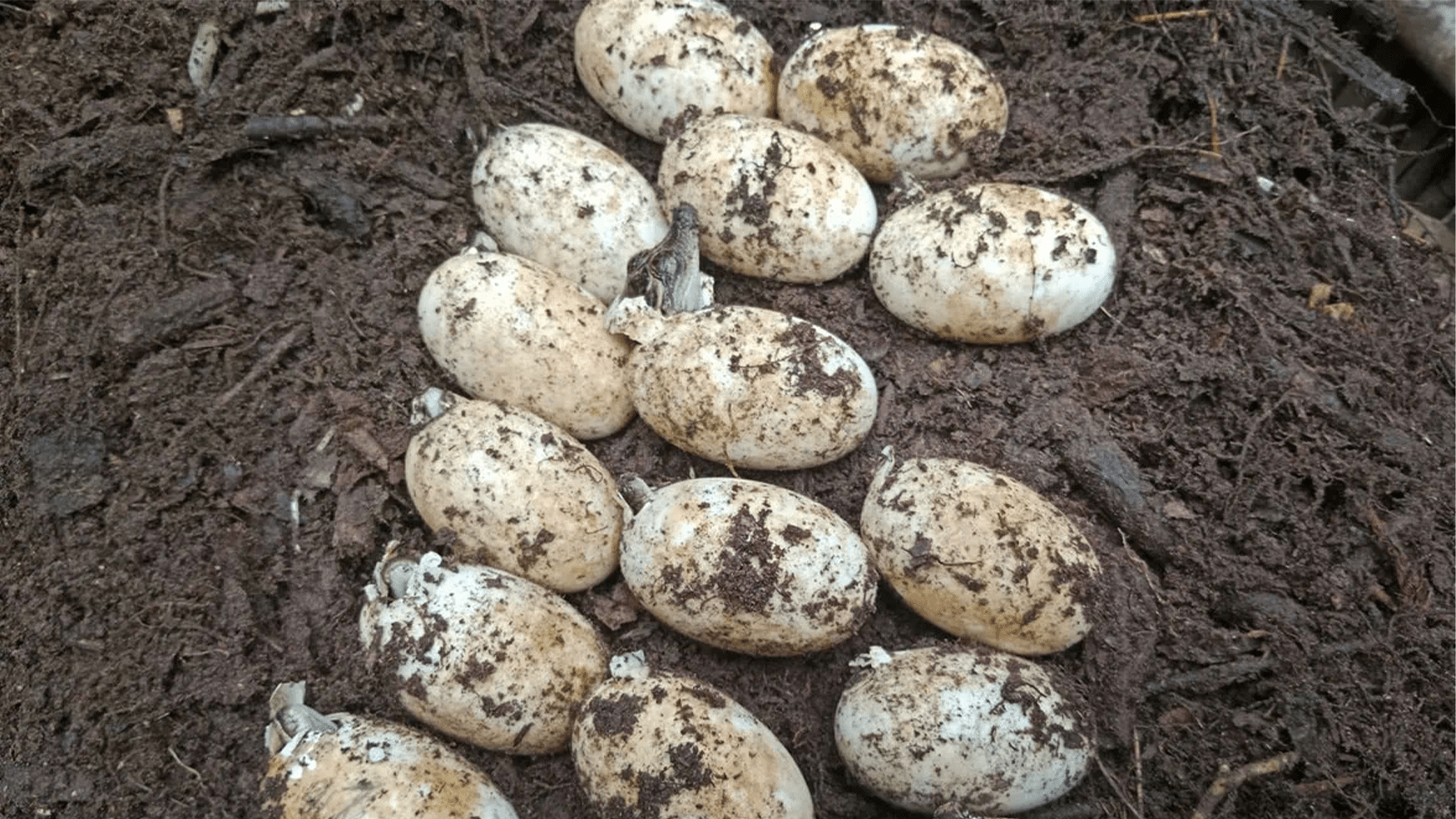
Siamese crocodile hatchlings emerging from their eggs. Sixty eggs from this rare reptile species have successfully hatched since they were discovered in May. © Bros Pov / Fauna & Flora
In a conservation victory, 106 eggs belonging to rare Siamese crocodiles (Crocodylus siamensis) were recently discovered in Cambodia’s Cardamom National Park. Sixty of the eggs have successfully hatched since they were found. According to conservation organization Fauna & Flora, this number sets a century-long breeding record for this critically endangered reptile.
“The recent discovery of wild nests emphasizes the vital importance of safeguarding this area,” Pablo Sinovas, Country Director of the Fauna & Flora Cambodia Programme, said in a statement. “With only a few hundred individuals estimated in the wild, the hatching of 60 new crocodiles is a tremendous boost. At a time when wetland biodiversity is declining rapidly across the region, it underscores the potential for natural recovery through sustained collaborative conservation efforts.”
What are Siamese crocodiles?
The Siamese crocodile is a medium-sized, freshwater reptile with a prominent bony crest on its head. It is not the human-eater that some of its relatives can be. People aren’t on the menu at all. They primarily eat frogs, snakes, fish, and other small animals. Siamese crocodiles were once all over Southeast Asia’s wetlands, but they have mostly disappeared from 99 percent of its former range due to cross-breeding with other crocodile species, hunting, and habitat loss. The species was feared to be extinct, but was officially documented by scientists during a survey of the Cardamom Mountains by Fauna & Flora, the Cambodian Government, and local groups.
[Related: Tracing the crocodiles’ curious evolutionary family tree.]
“One of the goals of the Circular Strategy on Environment is biodiversity protection and conservation,” Cambodia’s Minister of Environment Eang Sophalleth said in a statement. “The Siamese crocodiles play an important role in the ecosystem, and the discovery of five nests with successful hatching of 60 eggs reflects that the Cardamom National Park is a safe and suitable natural habitat for this species. It is a source of pride that Cambodia has the world’s rarest species, especially in the Cardamom National Park and other protected areas.”
Crocodile eggs
In May 2024, a group of locals came across three nests in an area where captive-bred crocodiles had never been released. According to Fauna & Flora, this suggests that the area was a natural habitat for the species and that community-led long-term protection efforts might be allowing wild populations to start to bounce back.
The nests were protected 24/7 and two other nests were found only a few days later in a separate area of the park.
A total of 60 Siamese crocodile hatchlings successfully emerged from these nests by the end, which offers a glimpse of hope for this species’ future.
[Related: Many Indigenous languages lack a word for ‘conservation.’ Here’s why.]
“We have been working closely with Fauna & Flora to protect this critically endangered species for several years, and we were excited to have found these crocodile nests,” Toy Chorn, a community warden who helped discover and protect the nests, said in a statement. “This discovery indicates that our conservation efforts have paid off, and I believe that with our ongoing conservation efforts, the population of Siamese crocodiles will continue to increase in the future.”
Caring for the landscape–with community
According to the Rainforest Trust, 27 species found in the Cardamom Range are at risk of extinction. One of the reasons that Siamese crocodiles have not met a similar fate has to do with its relationship with the community it lives in. It is revered by local Indigenous groups and it is considered taboo to hurt or kill one. However, the Siamese crocodile hasn’t received that same level of care from outsiders, and they were still hunted by outsiders and their habitats have eroded over time.
For over 20 years, Fauna & Flora has worked with local communities and the Cambodian governments to protect and supplement the remaining crocodile populations. The community led monitoring and anti-poaching activities to protect key breeding sites and worked alongside the Cambodian government to bolster the surviving populations with breeding programs. The program has successfully released 196 captive-bred Siamese crocodiles in the Cardamom Mountains since 2012.
“This successful endeavor demonstrates the positive impact of our collective work, as Siamese crocodiles now reproduce independently, forming new nests and offspring in their natural habitat,” Minister of Agriculture, Forestry and Fisheries Dith Tina said in a statement. “It reinforces our commitment to conserve Cambodia’s diverse biodiversity for generations to come.”
>>> Read full article>>>
Copyright for syndicated content belongs to the linked Source : Popular Science – https://www.popsci.com/science/siamese-crocodile-eggs/